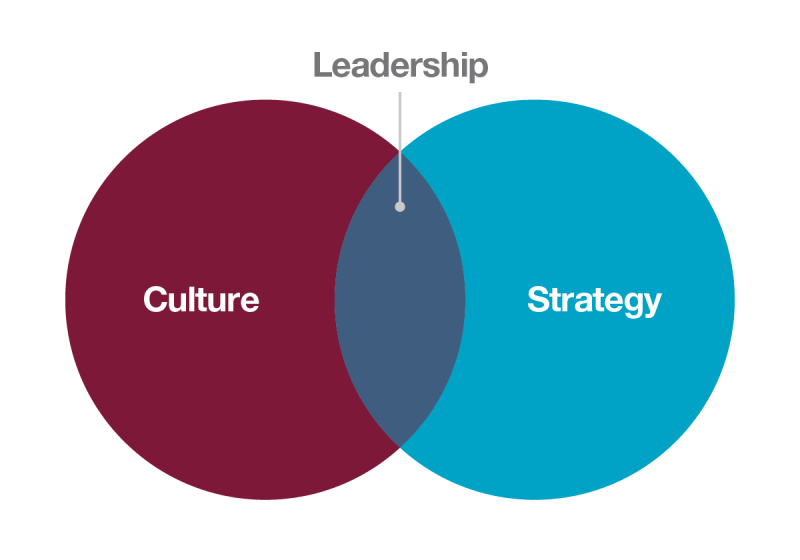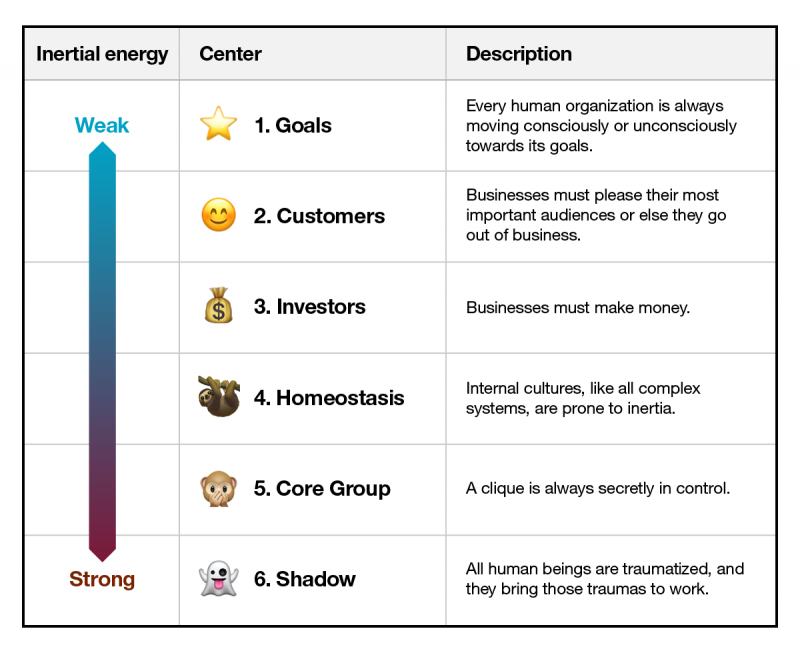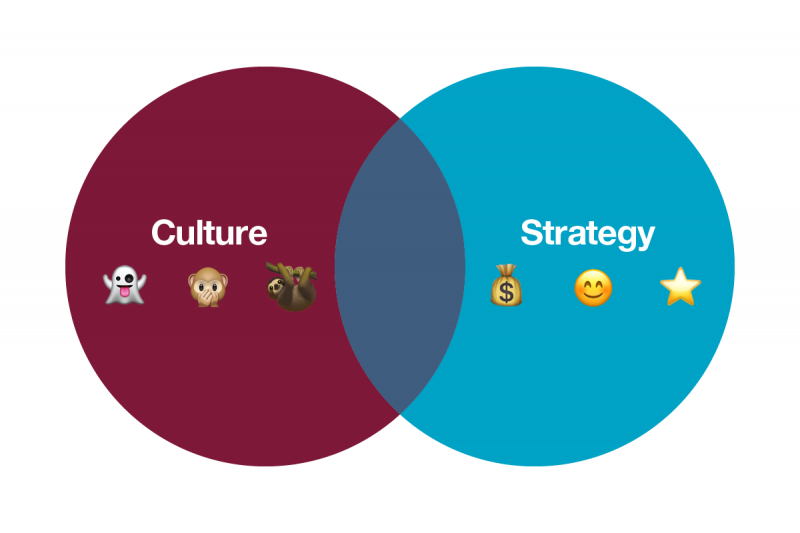
Culture, as they say, eats strategy for breakfast.
I sometimes use the Venn diagram above to point out that successful leaders must work on the culture, not just within what the current culture will allow.
This simple model connects with another one that I use frequently called the Six Centers. My original Six Centers blogpost had a long preface and several deep dives, but for anyone interested in a more concise version, it would go something like this:
All businesses have six “centers” that compete with each other for attentional resources. These centers are features of human organizations, not bugs—they cannot be eliminated.

Here are the six centers layered across my original Venn diagram:

You may find this framework helpful if you are:
- A strategic planner working outside in, starting with goals ⭐, and hitting resistance. (Beware the Core Group 🙊, which often shows up as “You don’t understand our industry” or “You don’t get how things work around here.”)
- A CEO working inside out and hitting a wall. (Spoiler: You 👻 are the problem.)
- A trainer or organizational development consultant working inside-only, but the business isn’t getting any more innovative or successful. (You’re probably reinforcing homeostasis 🦥.)
- A marketer tasked with customer centricity 😊 and short-term revenue 💰, but feeling lost in constant chaos because the goalposts ⭐ keep moving… likely because the internal culture is wacko. (This, sadly, is the job.)
Some tips for each of these personas:
- Strategic planner: A strategic plan must always include a change management plan for the internal culture 🦥 that’s palatable to the Core Group 🙊, or else it tanks. The Core Group is always known by the CEO and the board, but it can’t be named aloud by either one, so part of your job is to identify the Core Group.*
- CEO: An executive can find a way to see their own shadow 👻, using whatever works—Enneagram, acting class, humbling failure, executive coach, loving spouse, etc.—or else confront and connect each of the centers, working from the outside in, to discover how, specifically, the culture is eating the strategy for breakfast. From there, it should be stressfully obvious how they need to up their own game. Note: 360 degree reviews are generally terrible at revealing shadow, since 360 reviews are filtered by group homeostasis 🦥, internal self-silencing 🙊, and individual unconscious biases 👻.
- Trainer: Org dev consultants and culture trainers should present their work, then leave on a high note. Training, values, better communication protocols, and the like will all strengthen homeostasis 🦥, which tends to cause all the other centers to pull harder. Homeostasis is valuable and necessary in any group, so it’s a good thing. But stay around too long, and the applause will stop.
- Marketer: Every marketer must decide for themselves which of the centers they care about most, and then make their peace with that choice. If you care about all six centers equally, then you will often find yourself in high-conflict situations. But you will also be developing useful skills and leadership experience.
* Finding the Core Group is pretty straightforward. Many consultants can do this intuitively, but if you need more of a left-brained recipe: (1) Map the formal decision-makers. (2) Map the informal decision-makers. (3) Then, per Art Kleiner, map “all the people whom decision makers keep in mind.” From there, you should be able to see the Core Group.
Remember: If the CEO or board has described this Core Group to you in words, then you haven’t found it yet. But if a disgruntled low-level employee has described something that seems correct and explanatory, you’re probably onto something.


Leave a Reply